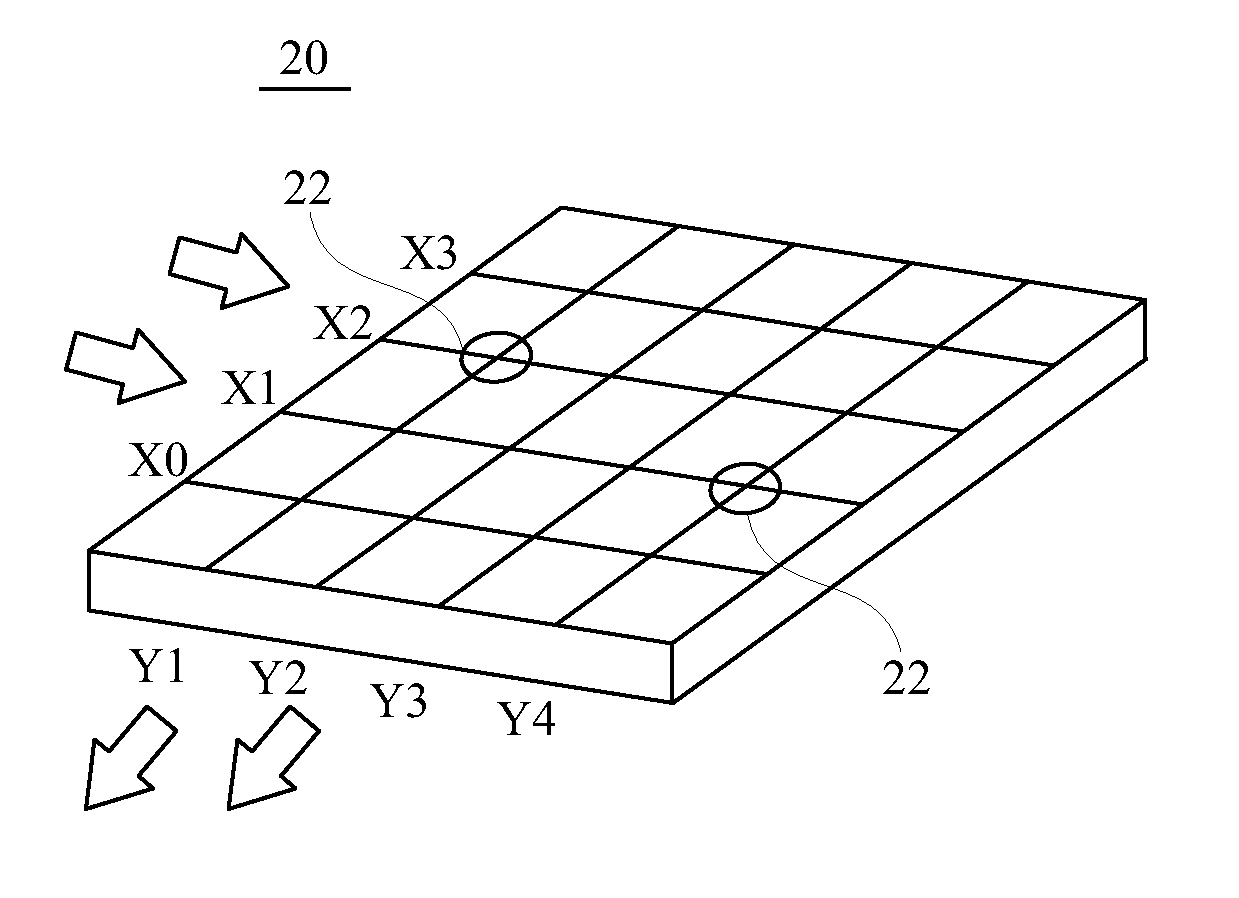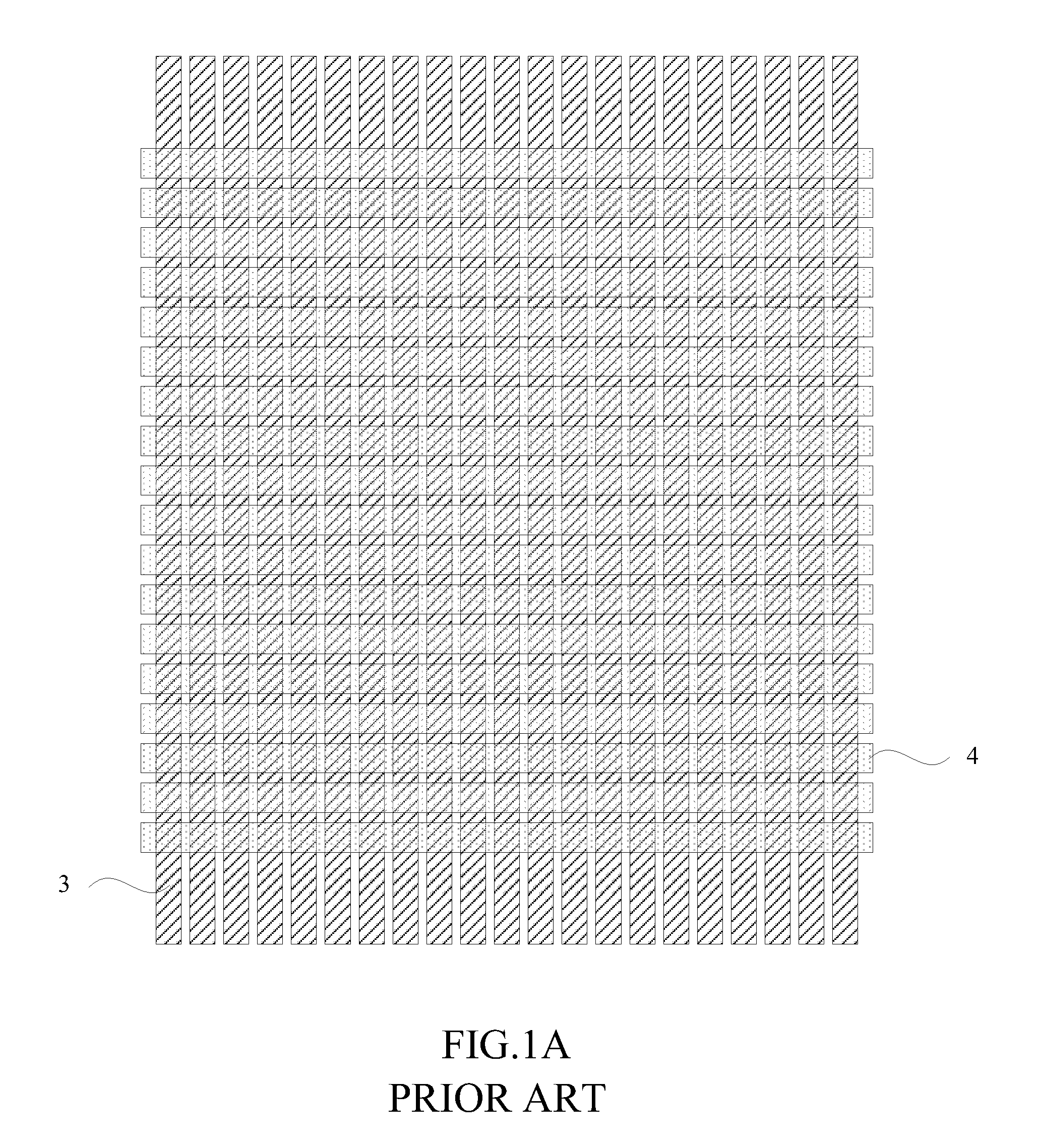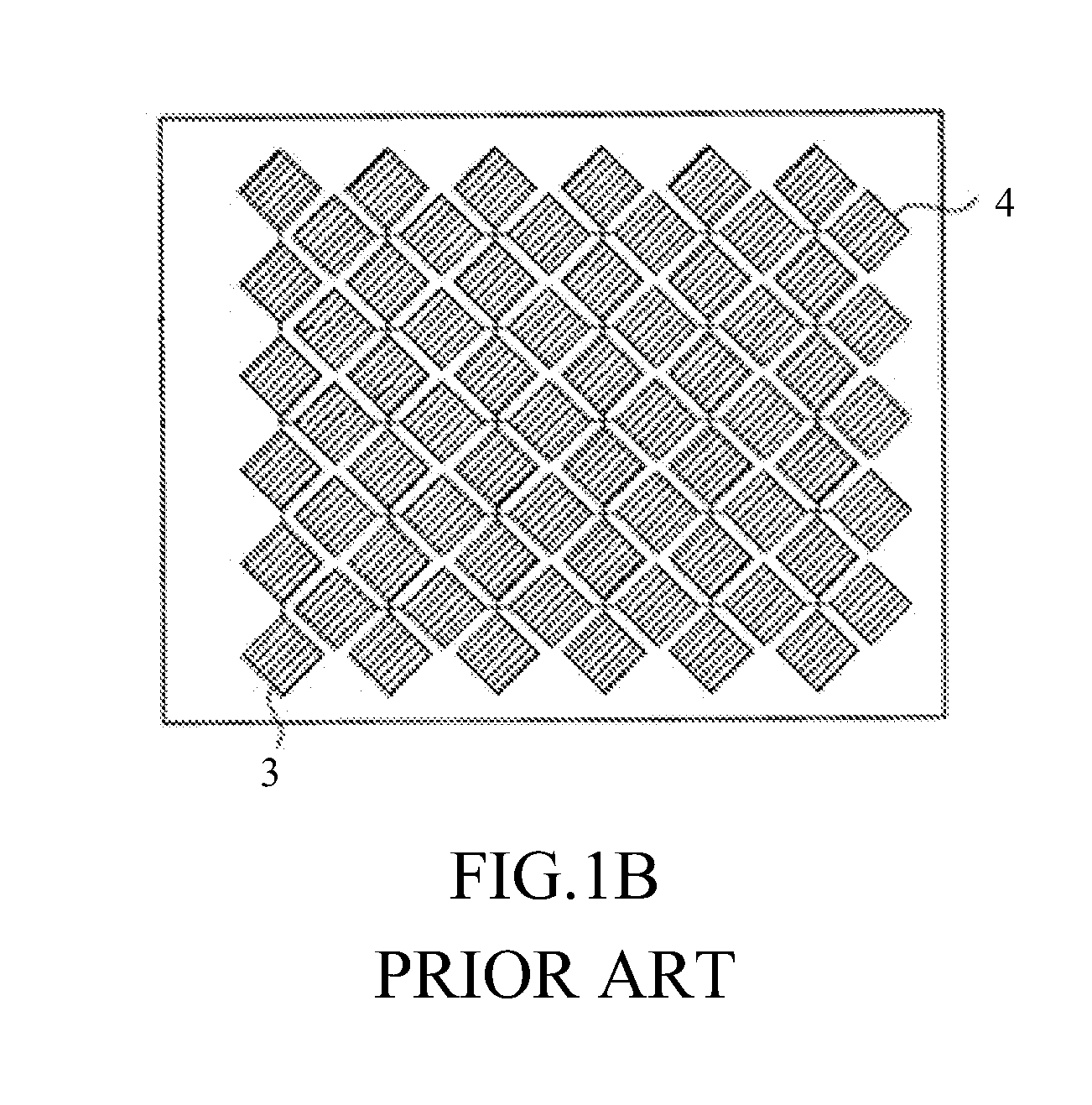Method of reducing computation of water tolerance by projecting touch data
a technology of touch data and computation method, applied in computing, instruments, electric digital data processing, etc., can solve the problems of not being able to implement detection, unable to accurately identify the real position of two or more touches, and unable to meet the requirements of water tolerance computation
- Summary
- Abstract
- Description
- Claims
- Application Information
AI Technical Summary
Benefits of technology
Problems solved by technology
Method used
Image
Examples
Embodiment Construction
[0033]The following embodiments are described with reference to the following accompanying drawings which exemplify the realizations of this invention.
[0034]Referring to FIG. 2, FIG. 2 is a flowchart of the method of reducing computation of water tolerance by projecting touch data of a preferred embodiment of the present invention. The present invention targets the handheld devices, and the sizable reduction of the computation of the water tolerance proves in the following embodiments to enable the computational algorithm of the method to build into the touch panel control chip (not shown in the figure). The method 10 of the present invention comprises the following steps:
[0035]STEP 1 (S110): obtaining capacitance raw data of a sensing array having row sensing lines and column sensing lines;
[0036]STEP 2 (S120): comparing the capacitance raw data with reference raw data to obtain a difference array;
[0037]STEP 3 (S130): obtaining a row projection list by extracting minimum values of r...
PUM
 Login to View More
Login to View More Abstract
Description
Claims
Application Information
 Login to View More
Login to View More - R&D
- Intellectual Property
- Life Sciences
- Materials
- Tech Scout
- Unparalleled Data Quality
- Higher Quality Content
- 60% Fewer Hallucinations
Browse by: Latest US Patents, China's latest patents, Technical Efficacy Thesaurus, Application Domain, Technology Topic, Popular Technical Reports.
© 2025 PatSnap. All rights reserved.Legal|Privacy policy|Modern Slavery Act Transparency Statement|Sitemap|About US| Contact US: help@patsnap.com



